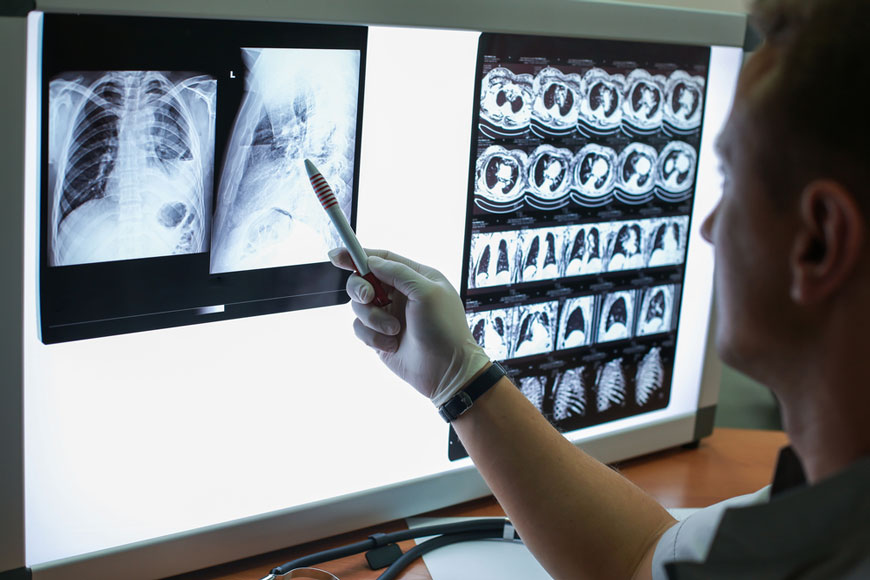
This is a type of CT scan used to detect calcium deposits found in atherosclerotic plaque in the coronary arteries. The build-up of plaque causes thickening of the arterial wall and can result in narrowing of the vessel. More coronary calcium means more coronary atherosclerosis, suggesting a greater probability of significant narrowing in the coronary arteries and a higher risk of future cardiovascular events.
The coronary calcium score scan is used mainly to evaluate a patients’ risk for future coronary artery disease-related problems. Those at increased risk include individuals with the following traits:
- Family or personal history of coronary artery disease.
- Male over 45 years of age, female over 55 years of age.
- Past or present smoker.
- History of high cholesterol, diabetes or high blood pressure.
- Obesity.
While the presence of coronary arterial calcium confirms the presence of atherosclerosis, some forms of plaque do not contain detectable calcium (“soft plaque”) and will not show up on a coronary calcium score scan (although they would be detected on a coronary CT angiogram scan). Therefore a “normal” calcium score scan does not absolutely guarantee a zero risk for a future life-threatening event, such as a heart attack.
If the coronary calcium score scan is positive, then it is likely your doctor will recommend more intensive lifestyle modification and therapy. This may include drugs such as a statin (a type of cholesterol-lowering drug) and perhaps aspirin.
How to prepare?
The calcium score scan is very simple with no special preparation or fasting required. The scan does not involve the injection of intravenous (IV) contrast (dye).
CT scanners use x-rays. The radiation dose from a calcium score scan is relatively low compared to other types of CT scans and the radiologist performing the scan will be mindful to keep the amount of radiation exposure to a minimum. However, because x-rays can harm a developing fetus, this procedure is not recommended if you are pregnant.

What to expect?
After registration, you will be directed to the CT scan area where a nurse will attend to you.
You will need to change into a special gown.
The technologist will call you into the scan room when it is your turn.
In the scan room, you will be asked to lie on the scanner couch with both arms raised over your head.
Sticky electrode patches will be attached to your chest to monitor your heart’s electrical signal during the scan. Men may expect to have their chest partially shaved to help the electrodes stick.
During the scan, you will feel the table move in and out of the scanner.
You will be asked to hold your breath several times and the actual scan should be completed within a few seconds.
Once the technologist is sure that all the information is acquired, you may leave the scan room.
After the procedure
You may continue all normal activities and eat as usual after the test.
The scan images will be reviewed and a computer program will help determine the number and density of calcified coronary plaques in the coronary arteries if any. A calcium score will be worked out and provided.
Your doctor will evaluate the calcium score, along with other cardiac risk factor measurements (age, blood pressure, lipid analysis etc.), to determine your risk from coronary artery disease and will make recommendations regarding your lifestyle, medications or additional cardiac testing.
Note that occasionally the scan reveals incidental findings outside the heart, for example, lung abnormalities that may require further investigation. Your doctor will discuss these findings with you and make appropriate recommendations.


